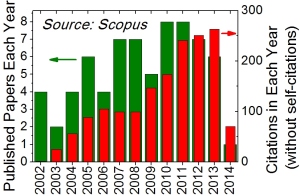I was born in Milan (Italy) on September 5th, 1976.
In 2001 I graduated in Electonics Engineering at the Politecnico di Milano and in Physics Engineering at the Ecole Centrale de Paris (France). In 2005 I received a Ph.D. degree in Physics at the Politecnico di Milano. In January 2005 I became “Ricercatore di ruolo” (Assistant Professor) and then in November 2014 Associate Professor of Physics at the Physics Department of the Politecnico di Milano .
My research activity is mainly focused on the generation and characterization of ultrashort laser pulses and their application to time-resolved pump-probe spectroscopy and microscopy. This activity is witnessed, as of February 2013, by the publication of 78 scientific papers on international journals, 5 on International books, 9 invited talks and several oral presentations at international conferences. My H-index is 26. The total number of citations of my papers is more than 2300. See Researcher ID: http://www.researcherid.com/rid/B-4809-2011 and Google Scholar: http://scholar.google.com/citations?user=w0Je4fQAAAAJ
In 2015 I have been awarded with an European Research Council “ERC-Consolidator” grant (1,8 M€) on coherent Raman microscopy, visit www.vibra.polimi.it. As Principal Investigator, I have been awarded with two other research grants in 2009-2013 from the Human Frontiers Science Program and from the Politecnico di Milano and several other funds as a team member.
I have been a visiting researcher at the Max Born Institute (Germany) for a total of about 4 months from 2003 to 2006 in the framework of two different research projects on time-resolved microscopy (in collaboration with Prof. Christoph Lienau) and short pulse generation (in collaboration with Dr. Pancho Tzankov).
Hereafter summaries of the major scientific contributions are given:
- Ultrashort laser pulse generation. This activity has been focused on the development of a time-resolved optical spectroscopic system capable of gene rating few-optical-cycle laser pulses (with pulse duration down to 6 fs) tunable from the near-infrared to the ultraviolet. Their characterization, based on novel measurement tools such as spectral interferometry (SPIDER) and spectrally-resolved autocorrelation (FROG), has been a challenging activity requiring state-of-the-art knowledge in laser physics.
- Time-resolved optical spectroscopy is a powerful technique for the study of fundamental photo-physical and photo-chemical processes in several molecular systems. Ultrashort tunable laser pulses have been employed for ultrafast spectroscopic measurements in an innovative experimental apparatus capable of measuring the three-dimensional map of the differential transmission signal of a sample as a function of wavelength and pump-probe delay in a few minutes and with a high sensitivity. Several ultrafast processes have been studied, such as: (i) excited state and energy transfer dynamics of carotenoids and bacterio-chlorophylls in photosynthesis; (ii) charge transfer in polymer-fullerene blends; (iii) optically-induced phase transition in a colossal magneto-resistance manganite; (iv) resonant coherent vibrational oscillations in several organic molecules; (v) photochemical dissociation of transition-metals complexes; (vi) intersubband energy relaxation and exciton characterization in carbon nanotubes; (vii) ultrafast electron-hole dynamics in core/shell CdSe/CdS dot/rod nanocrystals.
- Scanning near-field optical microscopy enables one to overcome the diffraction limit in the imaging of samples with nanometric features. A broad-bandwidth spectrometer has been developed, capable of measuring near-field absorption spectra of semiconducting polymers with approx. 100-nm spatial resolution. In another set up, a home-made femtosecond Ti:sapphire stretched-cavity oscillator has been coupled to metal-coated hollow-pyramid nanoprobes with a 50-100 nm aperture. Several near-field non-linear optical experiments have been performed, such as imaging of plasmonic resonances in metallic nanostructures and of nanostructures in organic materials via two-photon excitation.
- Micromachining of transparent materials with focused femtosecond pulses, inducing a permanent modification of their index of refraction, thus allowing the writing of waveguides and 3-dimensional photonic devices. This activity has led to a series of internationally pioneering results, such as the control of the waveguides cross section via astigmatically shaped beams and the demonstration of optical gain in Er-Yb doped waveguides.


